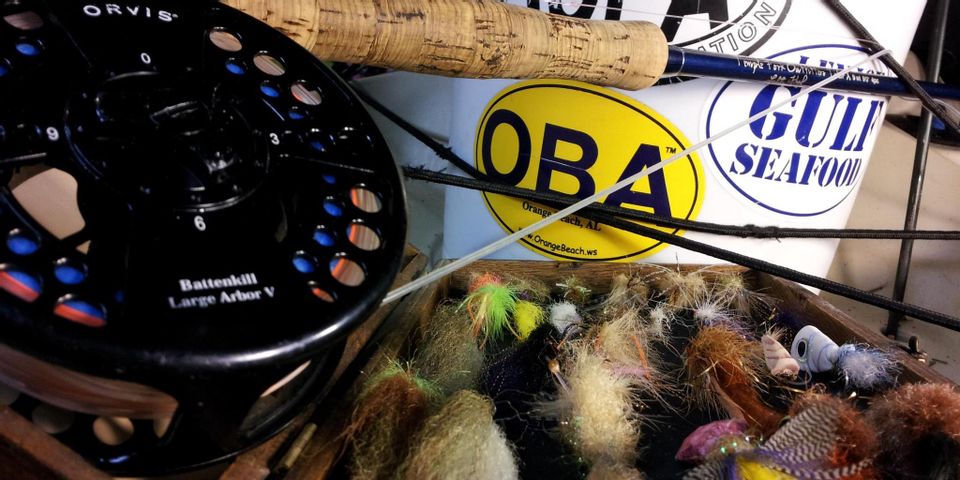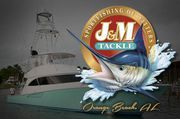
Fly Fishing in Alabama’s Salt Waters
Capt. Blake Michaleski
While relatively new to the Alabama Coast, saltwater fly fishing provides for a different and exciting way to target popular saltwater species. Because of the casting effort, saltwater fly fishermen typically sight-fish. That is, they cast at fish that are physically spotted versus blind-casting like many traditional anglers tend to do. If fish are known to congregate in a particular spot, blind-casting a fly can be productive though. The simplicity of fly fishing can be appealing for shore-bound anglers as one rod, a spool of tippet material, and a handful of flies is all that is needed. As such, fly fishing if often more about sport than boxing table fare. Fly anglers will target species many anglers overlook because of their poor food quality, but they make up with it for aggressive strikes, hard fights, and the tendency to jump when hooked (Tarpon!)
Most fish that eat live bait will eat a fly. Flies are often tied in very like-like patterns with a combination of natural and synthetic fibers that give the fly life-like movement in even the slightest of current or movement of the fly. Although many choose to tie their own, J&M Tackle carries a variety of flies, proven to work well anywhere along the Gulf Coast.
Species such speckled trout will key in on 3-4” baitfish patterns that resemble a menhaden (pogy) or even shrimp patterns. Species that can be seen blitzing bait along the beaches such as spanish mackerel, bluefish, bonita, ladyfish, and hardtails will hit nearly anything smaller and flashy that resembles a small baitfish. Bull Reds and Jack Crevalles like large baitfish patterns or especially poppers. Sheepshead, whiting, and pompano are typically taken on small shrimp and crab patterns often associated with bonefishing. Slot redfish will often eat anything that lands in front of them.
For the angler looking to get into fly fishing the beach or inshore Alabama. An 8wt or 9wt rod loaded with a quality weight-forward floating line will suffice. Anglers looking to expand their options can go lighter for smaller flies, and larger for big flies, but an 8 or 9wt works for all of it depending on the leader setup. Typically shorter, heavier leaders are needed to turn over large flies and poppers while smaller flies require lighter leaders for a finesse presentation. Match the rod, flyline, and leader setup to the type of fly you will be throwing, not necessarily the fish you expect to catch. Even a 4 or 5 wt can land a larger redfish with enough time, skill, and a little luck.
Fly fishing can be a fun, challenging, and exciting way to target popular game fish. Casting is technique and timing, not power. Focus on accuracy at shorter ranges and your abilities will grow from there. And of course J&M Tackle can get you set up with a saltwater fly outfit suitable for the Gulf Coast.
About the Business
Have a question? Ask the experts!
Send your question

